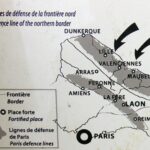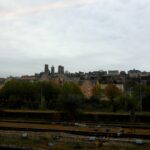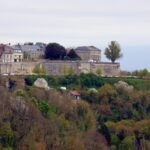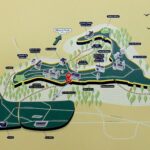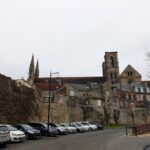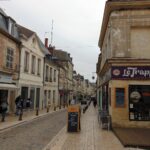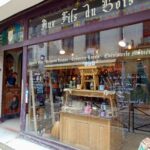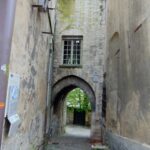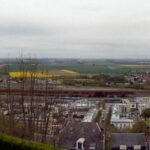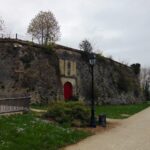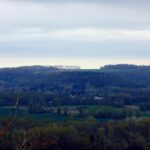Our team has extensive experience in conducting WW1-WW2 private tours to battlefields on the Western, Eastern, Mountain and even the Mediterranean fronts. This experience shows that almost all tourists want to combine a battlefield tour with a sightseeing trip. The purpose of the trip is recreation, of course, active and educational. Such a vacation includes getting to know the country, region, history, tradition, local attractions and, of course, local cuisine and wine. It also helps to better understand the stories of events 100 and 80 years ago. All our tours are designed for our friends and colleagues and take place in a friendly atmosphere. We have carried out successful and problem-free battlefield tours in Eastern Europe, North Africa and Asia, where there is great risk for various reasons, including those related to the political regime. Traveling in France is the safest in our opinion, but has various other small problems. These problems are related to France’s “national traditions,” which include strikes by transport workers, a chronic reluctance to learn foreign languages, the extinction of taxi services in the regions and difficult scheduling of visitors for some. France is a friendly, hospitable country for tourists from all countries. Military officers will never arrest you if you try to visit an old fort from the First World War. If this fort is used by the military, they will politely show you where you can be and take photographs, and where you cannot. Only in Russia, Iran, North Korea, Turkey or Tunisia can you be accused of espionage. The French police are very loyal to the consumption of alcoholic beverages. Officially, it is forbidden to drink wine and beer in public places, but many people ignore this rule. If you do not disturb public order and behave with dignity, none of the local residents will call the police. We are writing this so that tourists understand the friendly attitude of the army, gendarmerie and police towards them.
Our driver is always your friend and assistant in all situations. Some WWI Forts are private property and are not accessible to visitors. Our guide will always try to negotiate with the owner so that you are allowed into the private territory to examine an interesting object. Unfortunately, of the hundreds of surviving First World War Forts, only a few are available for internal inspection on a specific schedule. Very few original trenches and dugouts have been preserved, which we will also definitely show you. Military museums will surprise you with their rich collections of original items. Trust us as we are collectors too.
All our tours are private. This means that we develop an individual travel program in accordance with your wishes, based on many factors. For this reason, before drawing up the program, we ask you to indicate your age, sports capabilities, and approximate level of knowledge of military history and a specific battle. We also ask you to tell us about your hobbies, especially collecting, scale models, reenactment, fortification, aviation, cars, railway transport or anything else. Sometimes we see unusual hobbies for drawing from life (just add plus 30 minutes for each object), plants, flowers or butterflies. 98% of our tourists enjoy tasting local wine, liquor or beer, and 100% enjoy tasting national or local food. Please also inform us what type of alcoholic beverages you would like to taste, so that we can compile a list of cellars, wineries and specialized restaurants in advance. Please also let us know if any of your ancestors fought in any particular area, we will definitely include this place in the route.
According to our many years of experience, we suggest traveling with one your friend or a maximum of two. Firstly, it’s always more fun with company, and secondly, the costs will be half as much, which is very important when traveling around France. Your companion is usually your colleague in your hobby, and the travel program is easily agreed upon. Group tours always involve the risk of being on the same bus with a sick person. It is very difficult to travel with a group of more than 3-4 people, since everyone has different desires.
As we wrote above, all our tours are combined or hybrid. The optimal combination of a classic sightseeing trip from the battlefield with a tour. For your convenience, we offer private car tours from Paris from your hotel using the Drop on – Drop off system. We suggest visiting only the most interesting and best places along the route. We do not know how long you will spend visiting any museum or memorial, so we are ready to change your program at any time. We have had cases when the museum visit program required 40 minutes, but our guests spent more than 2 hours studying the museum collections. You can feel free in your desires, since “the last train to Paris will not leave without you.” Most of our tours last one day, but you can change the typical program in advance or on the spot. A hotel in Paris is usually twice as expensive as in the regions. We recommend reading standard questions and answers about toll roads, traffic jams, driver work beyond the estimated time and approximate costs when stopping overnight in the regions.
Why do we recommend day tours from Paris? In our experience, after a good friendly trip to the region, our guests need more rest and sleep the next day. On this day, we recommend an independent visit to 1-2 museums (for example, the Army Museum or Orsay), as well as evening walks in tourist places (Grands Boulevards or Montmartre). It is best to inform us in advance of the expected program of your entire stay in France, so that we can help you comprehensively plan your vacation. Please note that almost all museums are closed on Mondays. On this day of the week, you should plan walking tours around Paris or visiting certain museums in Paris (or in the Loire Valley, for example). Flea markets are only open on weekends. Fort Valerian is only accessible at certain times with a reservation in advance. The British Mk-V Museum near Cambrai is also only accessible on certain days and at certain times. This is an example of why we should work together to create your entire itinerary for visiting France.
But if you are willing to stay 1 or more days in a hotel far from Paris to see more, please let us know in advance. Usually an overnight stay outside Paris is required for the D-Day landings in Normandy, visits to Ypres and Verdun. We try to optimize the route and include as many interesting places along the way as possible, including museums, forts and memorials. However, some battle site tours require more than 1 day. Let’s create the optimal travel program together.
Verdun is a special destination for your trip and requires a minimum of 2 days. To make the journey interesting, we plan a route with visits to magnificent museums and forts along the way. In fact, this is a BB1 battlefield tour in the Marne-Compiegne-Champagne region, but with a return not to Paris, but to Verdun. The next day you will visit the famous Verdun Citadel, the main memorials and forts, see real trenches, and in the evening you will be back in Paris. We provide recommended programs and costs in a separate section of the site:
- Combined tours from Paris to Verdun via Champagne, Compiegne and Reims
Below we offer several tour program options to explore and discuss your own trip. You can choose the program below or change it as you wish, adding or excluding any objects to visit.
Combined WW1 battlefield private tour from Paris to Compiegne for one day
A hybrid program that includes a sightseeing tour of several eras from the Middle Ages to the First World War on the Western Front. In Compiegne, the ruins of city fortifications of the late 12th – 17th centuries, the Benedictine abbey of Saint-Corneuil, where in the 9th -10th centuries. French kings were crowned; Tower of Joan of Arc (built in the 12th century); town hall with clock tower from the early 16th century. (today the Historical Museum of Figurines is located here); several Gothic churches; former royal stables 1738, since 1876 – National Riding School; Armistice Museum (4 halls, two for each world war); Antoine Vivnel Museum (an archaeological collection and a collection of works of art from the Middle Ages to the 19th century are kept here). The main attraction of the city is the Compiègne Castle in the classicist style in the form of an irregular triangle with a front courtyard (begun to be built in the 1370s), converted into an imperial palace under Napoleon I (1808 – 1811); under Napoleon III it was used as an autumn imperial residence. The castle’s interiors include a chapel, the queen’s staircase, the hall of the guards, the queen’s games room, a dance hall, the bedrooms of Napoleon and Marie-Louise, the map room, and the Carriage and Tourism Museums (1927) of the Second Empire and the Empress (1953). Of interest to tourists is also the Compiègne Forest with the “Small Park”, a straight alley, Marie-Louise’s gazebo, and the hunting lodge of Empress Eugénie.
The Compiegne Palace, the residence of Napoleon I and Napoleon III, will introduce you to the era before the Franco-Prussian War.
Pierrefonds Castle is a classic defensive structure of the Middle Ages. It was here that the largest collection of knightly weapons and armor was kept, which moved to the Les Invalides, the Army Museum in Paris. Pierrefonds Castle was also the residence of Emperor Napoleon III.
The Scale Models Museum is the largest collection of miniature figurines and historical scenes. A typical tourist’s visit lasts about an hour and includes a quick tour of the collection. A fan of scale modeling can spend half a day here, carefully examining the details. Decide and plan for yourself.
Armistice Museum and Compiègne Forest. The most famous place where the First World War ended. There was also a continuation of the story into the Second World War with ritual propaganda action. Adolf Hitler enjoyed his “private” tour of the Compiegne Forest, visited the museum car and forced him to sign the Instrument of Surrender of France. In order to forever destroy the memories of Germany’s shameful surrender to the Allies, Hitler ordered the destruction of this carriage. But after the Second World War, French historians also found the remains of a burnt carriage, as well as another carriage of the same series. Step by step, the carriage museum was restored and collected a unique collection of artifacts from these events of the two world wars. A visit to the Compiegne Forest memorials and the Carriage Museum will take at least two hours.
During this tour you will drive through the entire city and see the main attractions. In the historical center of the city, a walking tour is planned in the area of the town hall and cathedral. For lunch or dinner, you can choose a local restaurant with national cuisine, French wine and reasonable prices. In the evening you will be back in Paris, earlier or later at your choice.
WW1 battlefields tour from Paris to Laon fortress and “Sere de Rivieres” forts
Our author’s tour of the First World War battlefields at the Second Line of Defense will allow you to perfectly study the defense strategy of France and see fortifications. The perfectly preserved fortified city on a high hill will pleasantly surprise you with its preserved ancient streets and houses. Everyone knows about the Citadel of Verdun, but Laon is much more interesting! Our car will allow you to quickly get to all the distant places of the fortress, which on foot is very long and tiring (we tested this on ourselves). We will help you get into the dungeons of the Citadel, where you will be given an amazing tour of history from ancient times to the First World War. The citadel is a restricted object and has its own rules for visiting, but these are our problems. Panoramic views of the surrounding area open from all places on the fortress wall. This is a truly strategically important military facility associated with various historical periods. In the far corner of the fortress you will visit a small fort, an artillery battery with positions for guns and casemates. From the observation point you will see a dozen intermediate forts of the “Sere de Rivieres” line and remember this wonderful picture for the rest of your life.
You can read about this defense system many times, but it’s better to see it once and “explore it with your feet.” In the fortress, we also suggest walking around the historical center and taking a break for lunch or dinner in a local cozy restaurant. An inexpensive café with national cuisine and local wines will help you better understand the history and traditions of the French. A visit to the fortress, dungeon, observation decks, artillery battery and stone streets of the city will take almost the whole day.
Our trip also includes a visit to 1-2 forts of this line, which you can observe from the height of an artillery battery. We guarantee external inspection of these forts. Through the gate bars you can look inside the fort. We do not guarantee passage inside the fort, but offer alternative options. Sometimes one fort near Laon can be visited as it houses an art museum. Art is always interesting, but you will have the chance to explore the fort inside. Let us know in advance.
- 1st and 2nd line of defense of Paris map
- Laon city fortress on top of a mountain
- Laon Citadel
- Map of the fortress and main attractions
- Laon Fortress walls and old town
- Cobblestone streets, old houses, cafes and restaurants, wine
- Shops with local food and wine
- Narrow medieval alleys and passages
- Promenade and old funicular, which is no longer in operation
- A line of intermediate forts of the Sere de Rivieres system is visible on the horizon
- Citadel walls and gates
- Intermediate forts on the other side of Laon
You can explore the structure of the fort inside and visit its dungeons during our other tours:
- WW1 battlefields and sightseeing tour to Champagne for 1 day (Fort Pompelle)
- WW1 battlefields tour from Paris to Verdun for 2 days (Fort Douamont and others)
- Tour to Fort Valerian on the outskirts of Paris with our guide (strictly as scheduled)
If you do not have the opportunity to spend one day entirely on Compiègne during your trip to France, we offer a combined option. We can include a visit to the Forest of Compiègne and the Armistice Carriage Museum in a one-day tour to the Laon Fortress, as it is located along the road. But this is not the best option for you. It is precisely for the reason of drawing up a rough schedule for your entire trip that we recommend that you contact us in advance and draw up a program. Tourists come to France many times and always find new interesting places. We try to choose the best routes at reasonable costs.
to be continued..
Somme river area battlefield tour from Paris

